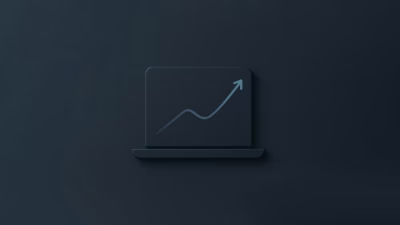You’ve mastered SQL. You can wrangle a messy spreadsheet. Maybe you’ve even built a dashboard or two that made your boss raise an eyebrow—in a good way. But now you’re stuck in a question a lot of us hit eventually:
Is this it?
You’re a data analyst. You like the work. But when you scroll LinkedIn and see “Data Scientist” in someone’s title, something stirs. You wonder: How is their work different from mine? Do I need a PhD? Am I even good enough for that?
Let me be real with you: Yes, you can make that leap. No, you don’t need a doctorate or ten years in Python. But you do need a map. And some stamina. Because the jump from data analyst to data scientist isn’t just a skill shift—it’s a mindset shift.
Let’s break down exactly what you need to do. No fluff. No vague “just learn ML” advice. Just the real, unglamorous steps that get you there.
Step 1: Get Clear on What “Data Scientist” Actually Means
Here’s the truth nobody tells you early on: the line between data analyst and data scientist is blurry. Like, maddeningly blurry. One company’s data scientist is another’s senior analyst. Titles are messy. The work? Less so.
In general, though, here’s the simplest way to draw the line:
- Data analysts mostly interpret and communicate data.
- Data scientists build models that predict or infer from data.
If you spend most of your time in SQL and dashboards, you’re analyzing. If you start building machine learning models, testing hypotheses with code, and creating systems that adapt to new data—now you’re moving into science territory.
So before anything else, ask yourself: Do I actually want to do that kind of work? Because data science isn’t just “fancier analysis.” It’s experimentation, uncertainty, and a lot of time debugging stuff that doesn’t work the first (or fifth) time.
Still in? Cool. Let’s keep going.
Step 2: Level Up Your Programming Skills
This one isn’t negotiable. Analysts can live entirely in SQL and Excel. Data scientists? They live in code—mostly Python, occasionally R. Data analysts often focus on interpreting data and generating reports, which can lead to valuable insights for business decisions. For those seeking to break into the field, data analyst entrylevel positions offer a great opportunity to hone these skills while working closely with both structured and unstructured data. In contrast, data scientists are expected to have a broader understanding of algorithms and statistical modeling, allowing them to build predictive models and develop sophisticated analytical tools.
But here’s the catch: you don’t need to become a software engineer. You just need to write good enough code to clean data, run experiments, and build models.
What to Learn:
- Python basics: variables, loops, functions, conditionals
- Pandas: for data manipulation
- NumPy: for math and arrays
- Matplotlib / Seaborn: for visualizing results
- Jupyter Notebooks: your new home base
How to Learn It:
- Do everything you used to do in Excel or SQL… but now in Python.
- Take datasets you’ve analyzed before and re-analyze them using Pandas.
- Mess up often. Read error messages. Google like a maniac. That’s how it works.
When I made the jump, I had a gnarly moment trying to pivot a DataFrame in Pandas. Took me three hours. In Excel, it would’ve been ten seconds. But the moment it clicked? Felt like I unlocked a new superpower.
Step 3: Understand Statistics Beyond Averages
If SQL is your hammer, and Python your wrench, stats is your blueprint. You need to know what the data is telling you—and more importantly, when it’s lying.
Key Concepts to Get Comfortable With:
- Distributions: normal, binomial, uniform
- Probability: conditional, Bayes’ Theorem (yes, that one)
- Hypothesis Testing: t-tests, chi-square tests, p-values
- Confidence Intervals
- Correlation vs Causation (the eternal battle)
Most data analysts dabble in some stats, usually for A/B tests. But data scientists live in this space. You’ll be designing experiments, estimating impact, and arguing over whether a 3% lift is actually significant.
What Helped Me:
- Doing stats with real business questions.
- Asking: “How confident am I, actually?” before jumping to conclusions.
You don’t need to love stats. But you need to respect it. It’s what gives your work teeth.
Step 4: Learn the Machine Learning Basics (for Real)
You knew this was coming. Eventually, you’ve got to dive into ML. But here’s where most people go wrong: they binge on complex algorithms before they understand the basics.
Don’t do that. Stay grounded.
Start Here:
- Linear Regression: the most underrated model of all time
- Logistic Regression: for classification problems
- Decision Trees
- Random Forests
- K-Nearest Neighbors
- Model Evaluation: accuracy, precision, recall, F1
Don’t just learn the syntax. Ask yourself:
- Why would I use this model?
- What assumptions does it make?
- What could go wrong?
You’re not building billion-dollar recommendation engines. You’re trying to show that retention increases with customer age—and prove it with a model that’s simple enough to explain to marketing.
Best Way to Practice:
- Kaggle competitions (especially the beginner ones)
- Real-world datasets (look for open data from your city, company, or industry)
- Rebuild simple models in sklearn and tweak them
Remember: nobody cares if you know XGBoost if you can’t explain linear regression clearly.
Step 5: Build a Portfolio That Shows Thinking, Not Just Code
This is where most people get lazy. They finish a course, do a project or two, and slap it on GitHub with no explanation.
That’s fine if you’re trying to show syntax. But great portfolios show thought process.
What to Include:
- Problem definition: What were you trying to solve?
- Data understanding: What did you explore? What surprised you?
- Modeling choices: Why did you choose Model A over B?
- Results: How would this impact the business?
- Tradeoffs: What didn’t work? What could be improved?
Good Project Ideas:
- Churn prediction for a fake subscription service
- Sentiment analysis of product reviews
- Housing price prediction using open city data
- Customer segmentation using clustering
Don’t just post code. Write a blog post. Walk someone through your logic. Recruiters don’t care about flashy models—they care that you can think like a scientist and communicate like a human.
Step 6: Learn to Tell Stories with Data
At some point, you’ll walk into a room (or Zoom) where nobody knows what “precision-recall tradeoff” means—and they won’t care.
But they will care that you just saved the company $200K by optimizing ad targeting.
You have to be bilingual: speaking both data and business.
How to Practice:
- Summarize models in one slide. Can your grandmother understand it?
- Present to a friend who isn’t in tech. Watch where they get confused.
- Use charts to show change, not just numbers.
This is the underrated skill that makes data scientists stand out. You can have the fanciest model in the world—if you can’t explain it simply, it won’t matter.
Step 7: Start Acting Like a Data Scientist at Work
Here’s the fastest shortcut to making the leap: start doing the work before you get the title.
If you’re in an analyst role now:
- Volunteer for projects that involve prediction or modeling
- Suggest experiments, not just reports
- Automate your own analysis using Python
- Pair up with the data science team and ask how they’d solve a problem
The goal is to build a track record before you make the switch. That way, when the role opens—or you apply elsewhere—you’re not just “aspiring.” You’ve already been doing it.
This is how I made the leap. No bootcamp. No fanfare. I just started solving tougher problems and quietly leveling up. Eventually, they had to notice.
Final Words: This Path Is Yours
The journey from data analyst to data scientist isn’t a quick leap. It’s more like a series of layers. You peel one back—Python, then stats, then modeling—and each time, you get a little stronger. A little clearer. A little more confident that you belong in this space. As you progress, you’ll discover valuable resources that can guide you through the complexities of the field, including courses specifically designed for data science for beginners. These foundations not only enhance your skill set but also connect you with a community of like-minded individuals who share your passion. With each layer you uncover, the path ahead becomes clearer, filled with the promise of new opportunities and challenges.
Yes, it’s intimidating. The job descriptions can feel absurd. But behind all the jargon, data science is still about curiosity. About asking better questions and chasing answers with real tools.
And if you’re already a good analyst? You’ve got the curiosity part nailed.
tl;dr:
- Learn Python. Use it for everything.
- Deepen your stats. Get cozy with uncertainty.
- Start building and evaluating models.
- Create thoughtful, clean portfolio projects.
- Communicate clearly and simply—always.
- Do the work before the title arrives.
You’re closer than you think. And the best part? Once you start down this path, every problem becomes a little more solvable—and a lot more fun.
Want help crafting a custom learning plan or finding good datasets to practice on? Say the word.





